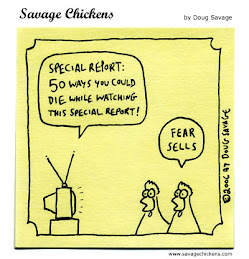As mentioned before, the news has the power to choose what information the public sees. This means that the newscasters decide which stories and victims get air time. One of the most common groups of victims on television is children, considered by Professor David Altheide as “a critical symbol in the entertainment-oriented fear perspective” (Altheide, 156). Between the years 1994 and 1996, 28% of Los Angeles Times headlines that contained the word “fear” had the word “children” in the article (Altheide, 158). One reason for the media’s emphasis on child victims is that nearly everyone supports the protection of children and opposes crimes to children such as pedophilia, abduction, abuse, etc, so the news stories appeal to a wide crowd. However, an effect of widespread coverage of crimes against children is that it conditions Americans to expect an unreasonably high amount of child victims.
White people are another group that are over-represented as victims on the news. Black people are most often reported as the perpetrators and not the victims, even though black people are much more commonly the victim (Glassner, 109). A classic example of the inadequate coverage of crimes with black victims is the Kent State shootings versus the Jackson State shootings. At Kent State, police shot at a crowd of anti-war protesters, killing four and wounding nine. At Jackson State, a historically black college, police shot at anti-racism protesters and killed two and injured twelve. Even though the Jackson State shootings were only ten days after the Kent State shootings, and they were very similar in nature, Kent State got much more media coverage than Jackson State. Without adequate coverage of crimes against all races, Americans will be conditioned to believe that whites are the most victimized race. In addition, the underrepresentation of black victims perpetuates the stereotype that blacks are dangerous. If black victims were actually portrayed as victims on the news, they would be humanized to viewers, receive more viewer sympathy, and possibly dispel some of the fear surrounding minorities.
Just as repetition of news stories with white or child victims has conditioned Americans to fear minorities as perpetrators of crimes, the repetition that only citizens of the “brave new world” are civilized has conditioned Lenina to fear the “Savages.” The first word Lenina said when she arrived at the Reservation was “queer,” identified by Bernard as her “ordinary word of condemnation” (Huxley, Ch. 7). As they made their way through the pueblo, Lenina regurgitated conditioned lines, such as “cleanliness is next to fordliness,” and scorned the Savages for not adhering to her conditioned beliefs about what a society should be like.







No comments:
Post a Comment